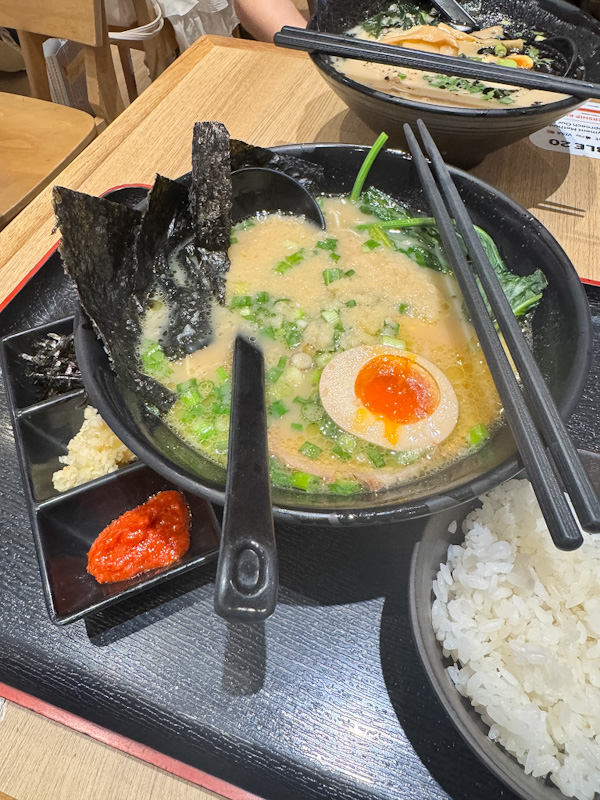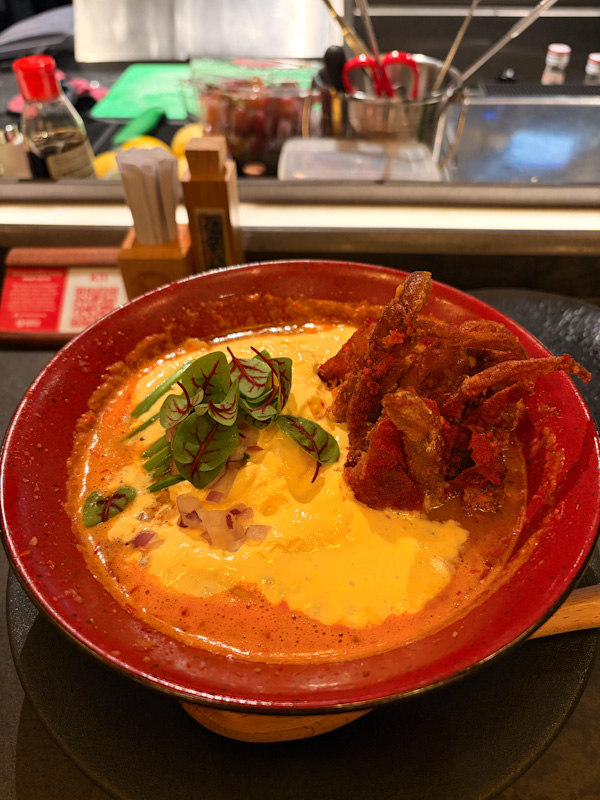WHAT WE ATE
- Seafood Ramen – 55/100, Hiroshima
- Shrimp Ramen – 65/100, Hiroshima
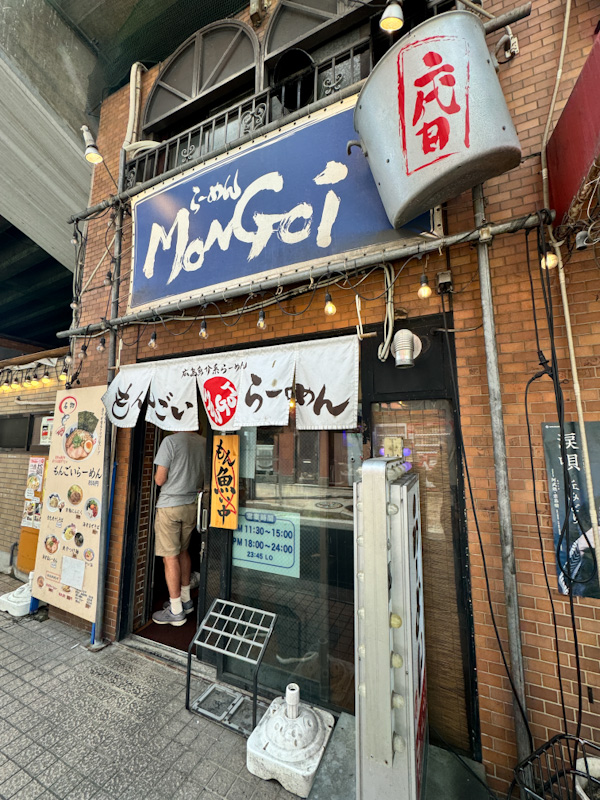

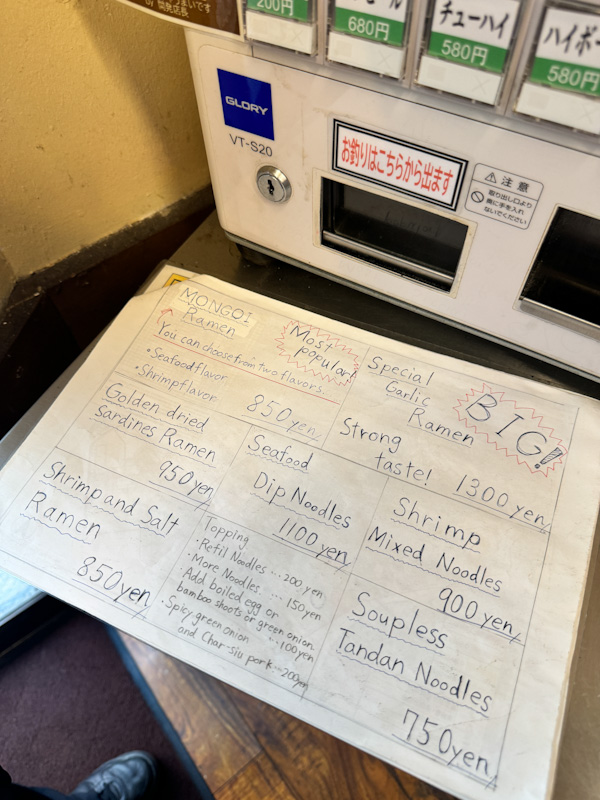
Mongoi Ramen in Hiroshima stands out for its unique ramen offerings. The chef, originally from Kure, a port town in Hiroshima, brings his roots into his cooking, using predominantly seafood-based ingredients. This makes Mongoi Ramen a great choice for those seeking something different from the dominant Shoyu variants in the region. The seafood influence adds a distinctive twist, making it a popular spot for both locals and visitors looking to explore new flavors in Hiroshima’s ramen scene.

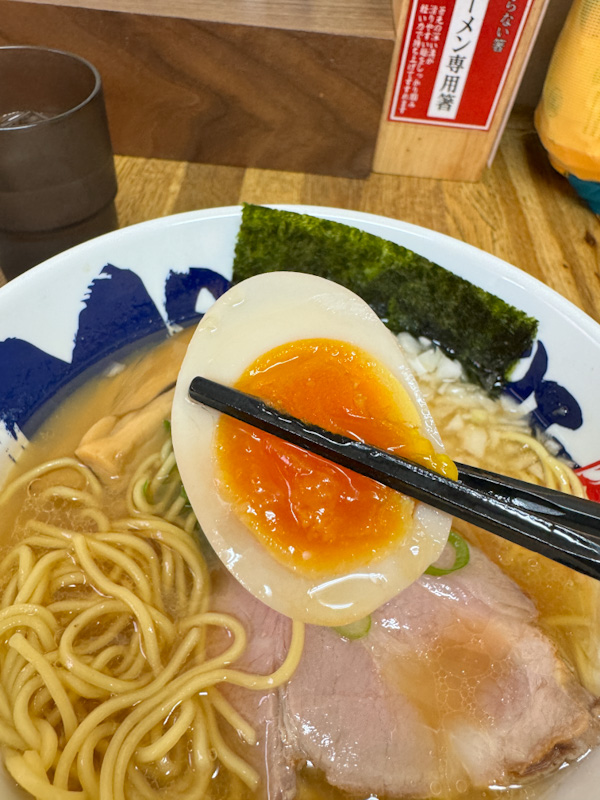

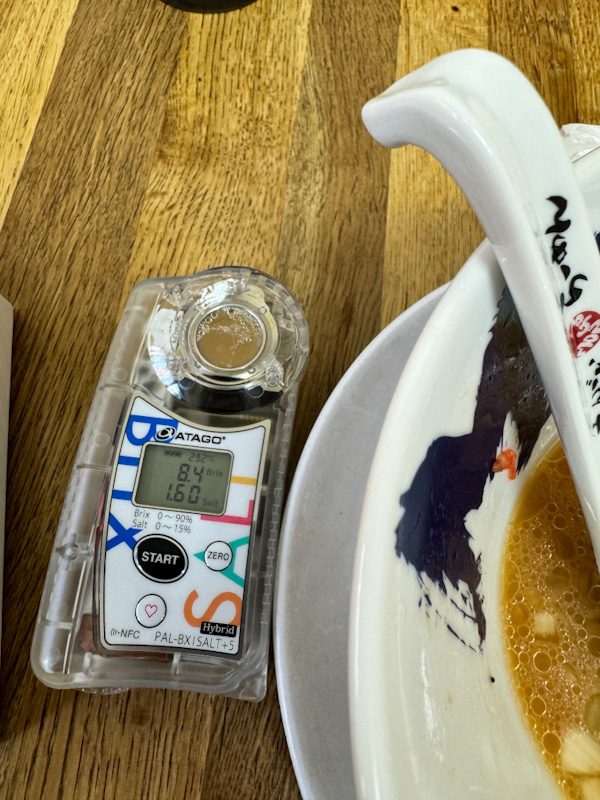
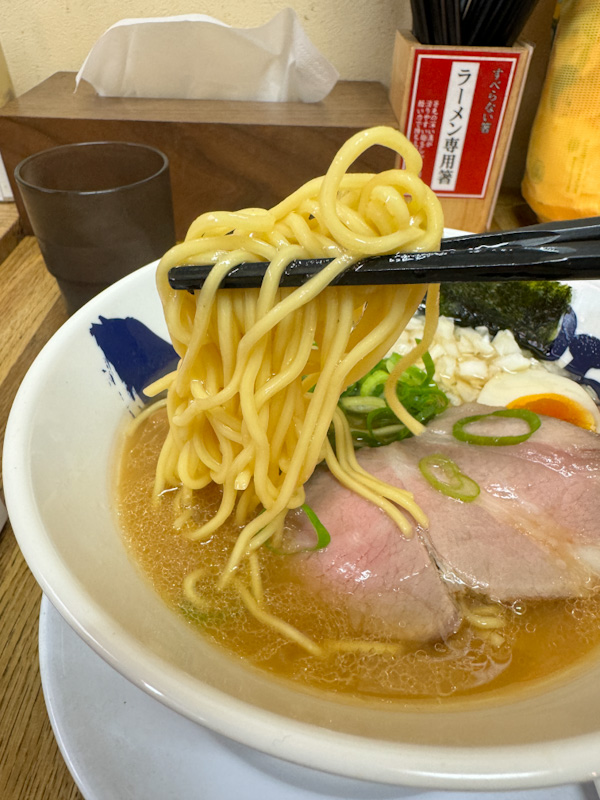
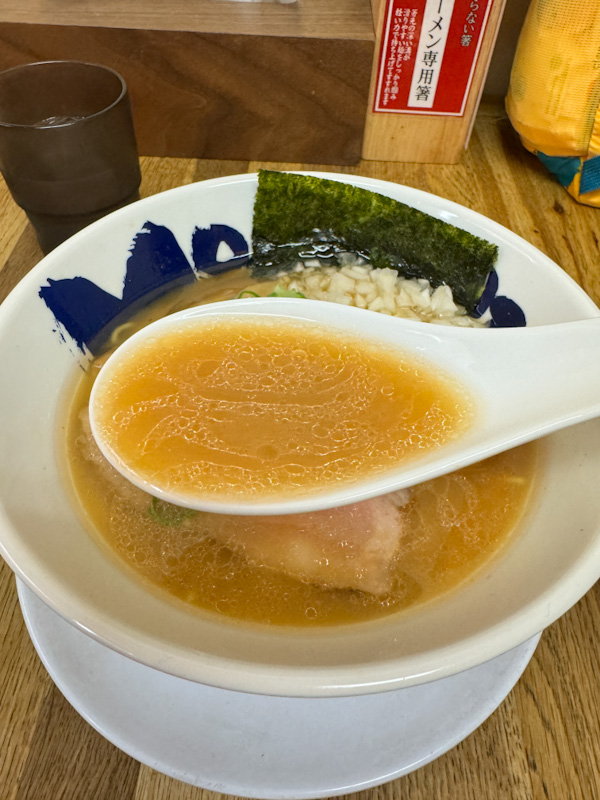
Seafood Ramen: 55/100
Noodle: 20/35
The noodles are medium thick and rounded, served al dente with a firm and strong bite. The mouthfeel is snappy. However, the noodles are noticeably salty, even in the already salty broth, making us wonder if they are heavily salted or if they have absorbed the Shoyu flavor (likely the latter).
Soup: 20/35
The soup is seafood-based but mixed with strong Shoyu, resulting in a very sharp Shoyu head. The lingering saltiness overwhelms much of the flavor profile, measuring a high 1.84 in saltiness on the refractometer. Between the overpowering Shoyu and saltiness, there is a subtle sweetness from the seafood broth. Adding the provided pepper condiment hardly subdued the Shoyu taste, resulting in a rather flat meal. It’s a pity that the soup is so out of balance.
Meat: 10/20
The presentation of the meat is beautiful, with medium thin slices of pork that have a pinkish lightly cooked look. Stirring it into the soup finishes cooking it. However, the texture of the meat did not match its aesthetics. The leaner portions were firm but tender enough, while the fatty parts were too chewy. A leaner cut of meat would have been better for this preparation. The taste is on the lighter side, retaining some original pork flavor but also leaving much of the unwanted porkiness.
Topping: 5/10
The toppings include seaweed, onion, bamboo shoots, and half a marinated egg. The bamboo shoots are tender yet crunchy with a subtle sweetness and not too pungent. The eggs are well-marinated, savory with a good balance in taste, and the yolk is still gooey when served, which is great.

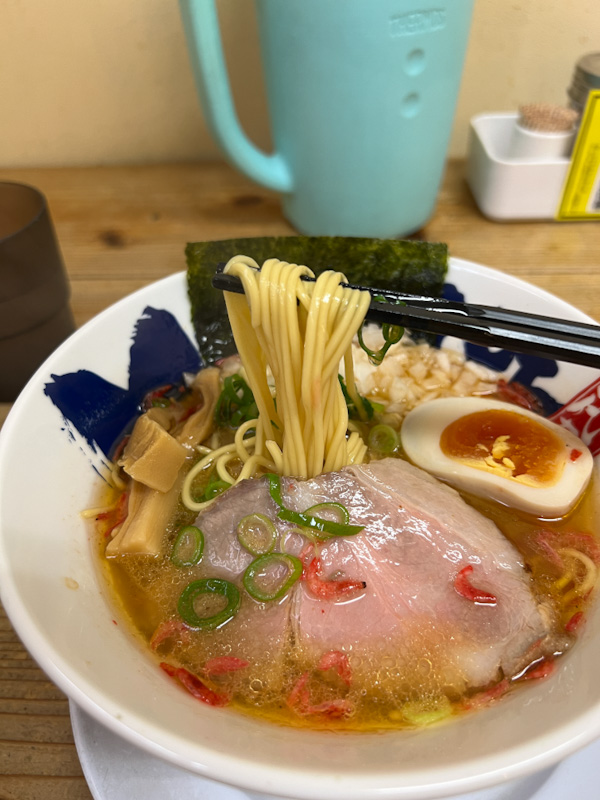

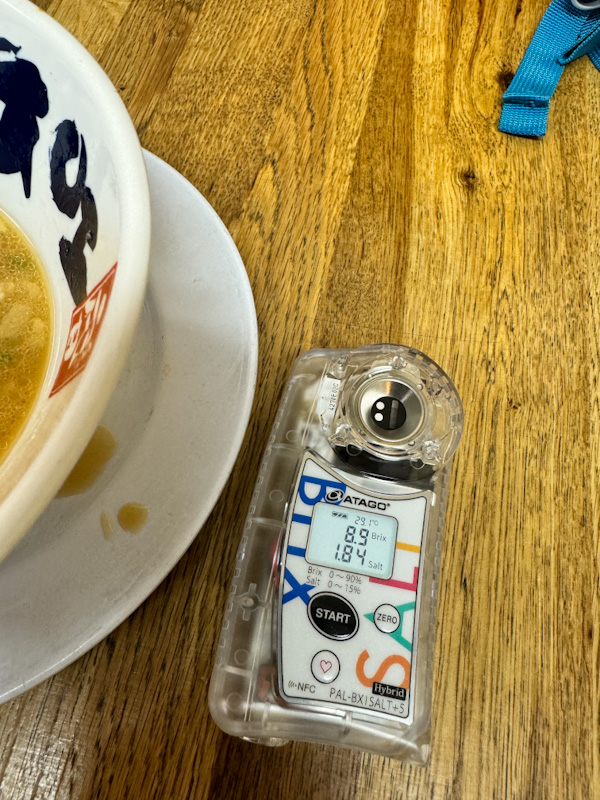

Shrimp Ramen: 65/100
Noodle: 20/35
The noodles are medium thick and rounded, served al dente with a firm and strong bite. The mouthfeel is snappy. Unlike the seafood ramen, these noodles are much less salty, confirming our suspicion that the seafood ramen noodles were heavily salted.
Soup: 25/35
The soup has an aromatic shrimp smell that will appeal to crustacean lovers, but the taste is milder than expected. The shrimp essence comes largely from the shrimp oil, with the shrimpy flavor being very light. The soup is quite oily, with a layer of oil on top. It starts savory, followed by a mellow sweetness and a lingering garlic-like taste.
Meat: 10/20
The same chashu is used here. The presentation is beautiful, with medium thin slices of pork that have a pinkish, lightly cooked look. Stirring it into the soup finishes cooking it. However, the texture does not match its aesthetics. The leaner portions are firm but tender enough, while the fatty parts are too chewy. A leaner cut of meat would be better for this preparation. The taste is on the lighter side, retaining some original pork flavor but also leaving much of the unwanted porkiness.
Topping: 10/10
The toppings are similar to the seafood version, with the addition of dried shrimps that enhance the shrimpy flavor. Other toppings include seaweed, onion, bamboo shoots, and half a marinated egg. The bamboo shoots are tender yet crunchy with a subtle sweetness and not too pungent. The eggs are well-marinated, savory with a good balance in taste, and the yolk is still gooey when served, which is great.
DISCLAIMER
One man’s meat is another man’s poison.
Find out more about our palettes and how we evaluate our ramen here. 😉

